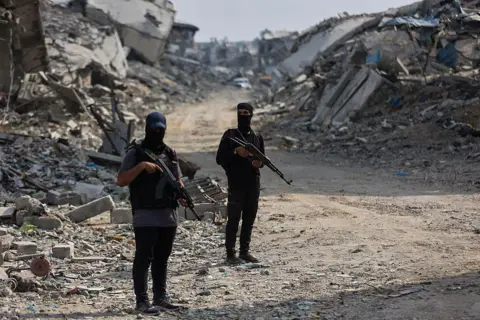US President Donald Trump's envoy and son-in-law, Jared Kushner, returned to Israel on Monday, as mediators face a new obstacle in their efforts to advance negotiations on the fragile Gaza ceasefire deal to the next and more complex phase.
Key sticking points remain unresolved, including Hamas's disarmament, the reconstruction and future governance of Gaza, and the deployment of an international security force to the territory.
Without a timeline for the discussions, which are likely to require significant concessions from both Israel and Hamas, there are doubts that any progress can be achieved.
Another challenge has emerged recently, involving scores of Hamas fighters believed to be in tunnels beneath the southern city of Rafah behind the so-called Yellow Line, which marks the area under Israeli control.

Last week, US special envoy Steve Witkoff said an amnesty could be offered for fighters who laid down their arms, and that this could be a model for what Washington hoped to apply in the rest of Gaza.
Witkoff said 200 fighters were trapped, although this number has not been confirmed.
According to media reports, Kushner and Israeli Prime Minister Benjamin Netanyahu discussed the issue during a meeting in Jerusalem on Monday.
Hamas has previously said the fighters will not surrender and demanded that they are given safe passage, which has so far been rejected by Israel.
An Israeli government spokeswoman stated that Netanyahu and Kushner had discussed phase one, which we are currently still in, to bring our remaining hostages, and the future of phase two of this plan, which includes the disarming of Hamas, demilitarising Gaza, and ensuring Hamas will have no role in the future of Gaza ever again.
The war in Gaza was triggered by the Hamas-led attack on southern Israel on 7 October 2023, resulting in about 1,200 deaths and 251 hostages taken. Since then, over 69,000 people have reportedly died in Gaza due to Israeli attacks, according to figures from the Hamas-run health ministry.
The first phase of the ceasefire, which came into force last month, focused on halting the war, returning all hostages, and securing humanitarian aid into Gaza. So far, twenty living hostages and the remains of 24 deceased captives have been released, with four bodies remaining in Gaza.
Both Israel and Hamas have accused each other of violating the truce during these negotiations.
As of now, the Israeli military occupies 53% of Gaza's territory and is expected to ease further in the next stages of the plan.
With no immediate advances in negotiations, analysts warn of a de-facto partition of Gaza, possibly enduring due to the hesitancy of involved countries to clearly define their military involvement or the future governance of Gaza.




















